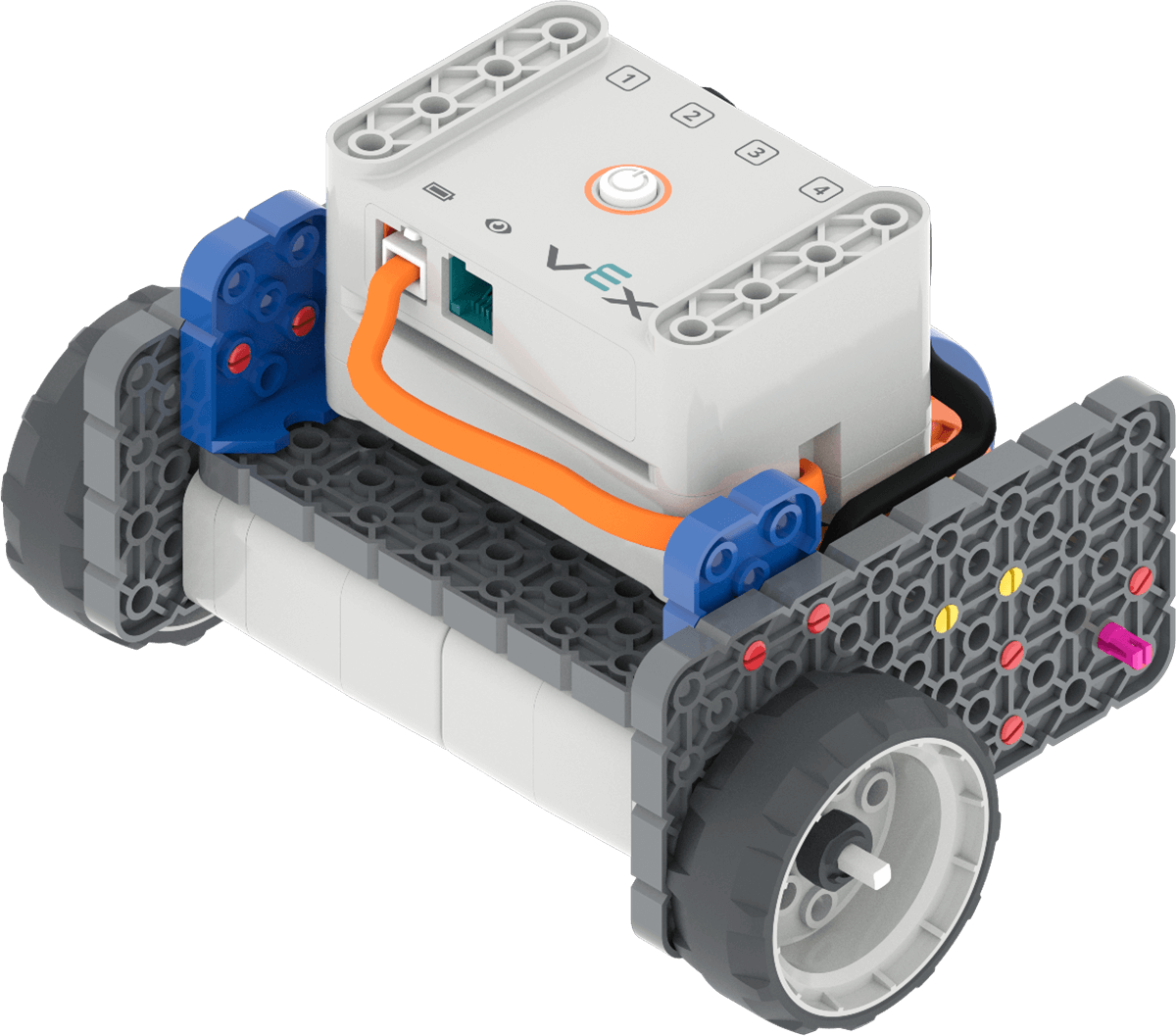Engage
Launch the Engage Section
ACTS is what the teacher will do and ASKS is how the teacher will facilitate.
| ACTS | ASKS |
|---|---|
|
|
Getting the Students Ready to Build
Let’s make sure we have everything we need to find the circumference of the circle the Code Base makes in one full rotation.
- If students do not have a Code Base 2.0 from the previous Lab, allow 10 - 15 minutes for students to build it prior to the Lab activities.
Facilitate the Build
- InstructInstruct students that they are going to be using VEXcode GO to test to see if they have input the correct parameters in the [Spin for] blocks, after they have calculated the number of turns it takes to complete a 360 degree turn.
-
DistributeDistribute
one pre-built Code Base 2.0, pencil and paper to each group.

Code Base 2.0 - FacilitateFacilitate by making sure students have VEXcode GO open and their Code Base paired to VEXcode GO.
- OfferOffer assistance to students who need help setting up and pairing VEXcode GO.

Teacher Troubleshooting
- Check Your Ports - Remind students to check to make sure that their right motor is plugged into port 1, and their left motor is plugged into port 4.
- Connect - all GO Brains to the VEX Classroom App before beginning the Lab to help facilitate the use of VEX GO in your classroom.
- Check your Batteries - Use the VEX Classroom App or the indicator lights to check the status of the GO Batteries, and charge if necessary before the Lab.
Facilitation Strategies
- Think about how your students will access VEXcode GO. Ensure that the computers or tablets that students will use have access to VEXcode GO. For more information about setting up VEXcode GO, see this Knowledge Base article.
- Gather the materials each group needs before class. For this Lab, each group of two students will need a GO Kit, Build instructions, a computer or tablet to access VEXcode GO, pencil and paper.